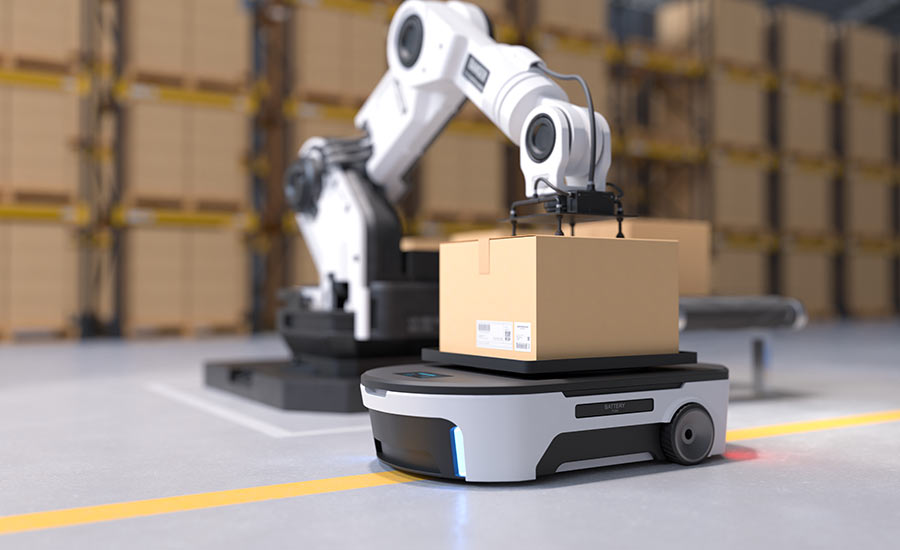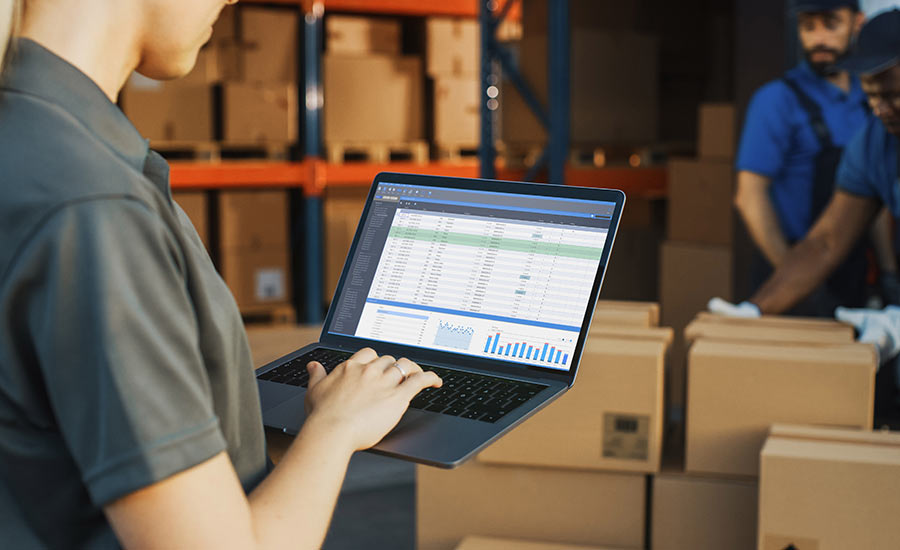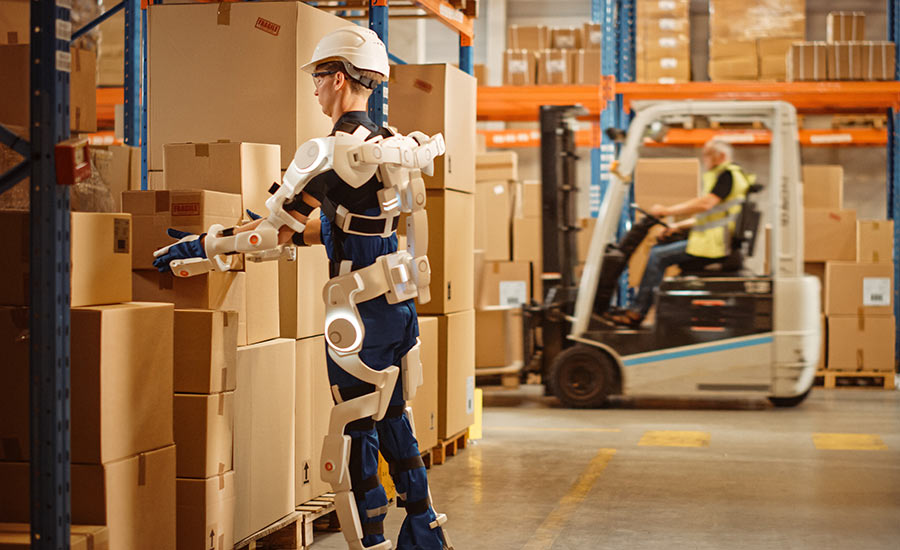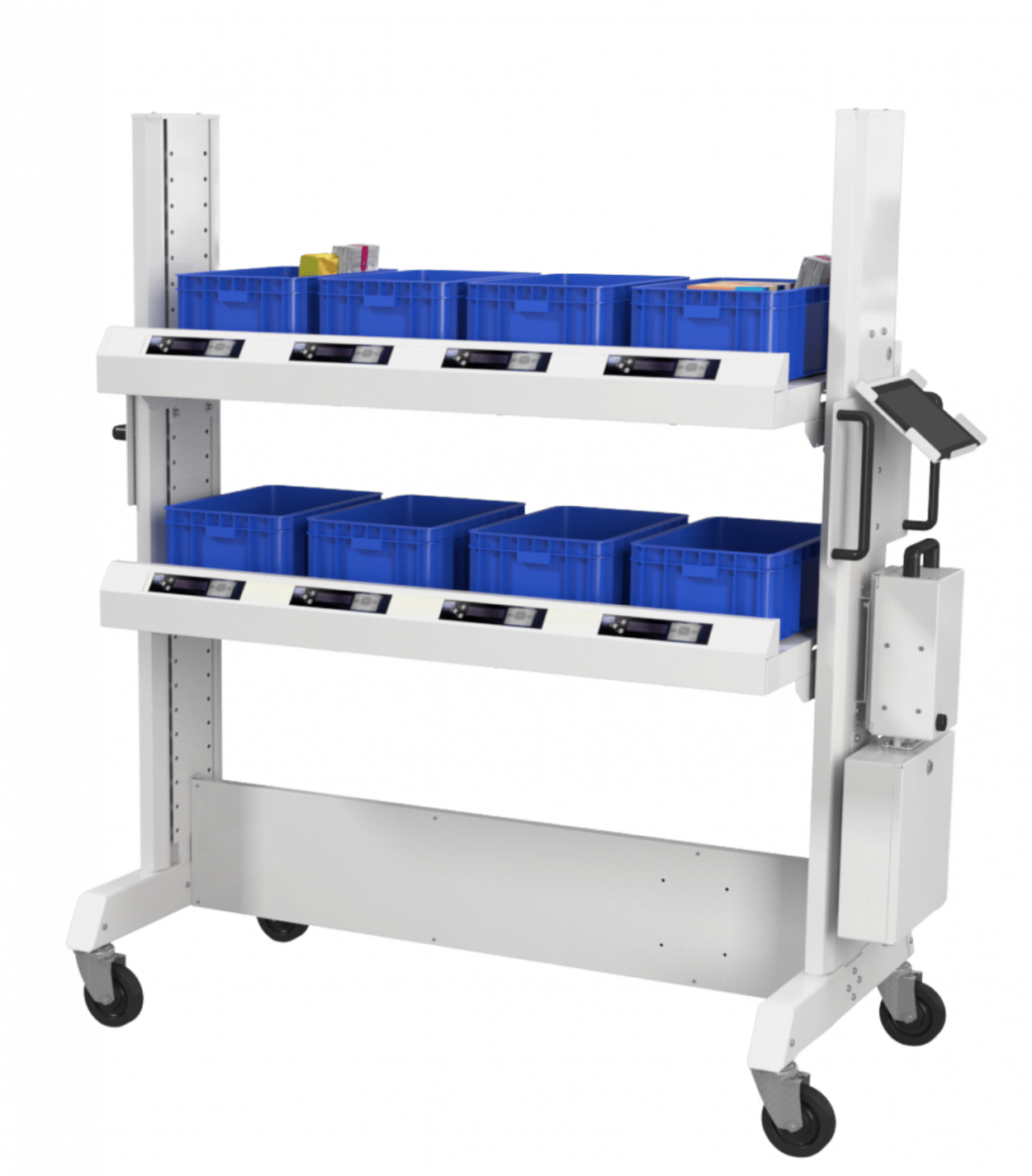What Is a Smart Warehouse? Technologies, Benefits & Challenges
What Is a Smart Warehouse? Technologies, Benefits & Challenges
Whether it’s reducing costly product returns by increasing picking accuracy or protecting your warehouse operators from injury, smart warehousing is the solution to a wide range of challenges that traditional warehouse systems pose.
We’ll share all you need to know to implement smart warehouse technologies and introduce you to automated warehouse solutions at Modula to help you make the switch to a smart warehouse system.
What Is a Smart Warehouse?
A smart warehouse is a storage facility that utilizes automated warehouse solutions, such as automated storage and retrieval systems, robots and inventory management systems, among other technologies.
This type of facility provides real-time data and predictive analysis to help you make more informed decisions to meet the changing consumer demands.
A smart warehouse isn’t defined by a single factor or innovation. It’s a warehouse in which a wide range of technologies optimizes every step of the order fulfillment process, from receiving inventory to delivering orders to your customer’s door.
Smart Warehouse vs. Traditional Warehouse
While a smart warehouse utilizes automated warehouse solutions, a traditional warehouse relies on conventional warehouse storage racks and manual labor to store inventory and perform warehouse operations.
Compared to a traditional warehouse, a smart warehouse can significantly increase efficiency and productivity, while minimizing errors in tasks such as picking, managing inventory and packing.
Smart Warehousing Technologies
Smart warehousing technologies allow you to replace manual tasks with automated systems for improved productivity.
Types of smart warehousing technologies include:
Automated Storage and Retrieval Systems
Automated storage and retrieval systems (ASRS) are computer-controlled systems that automatically place and retrieve items from defined storage locations in a warehouse.
ASRS are integrated with a warehouse management system (WMS) to determine which item should be retrieved. This smart warehouse solution includes automated systems such as vertical lift modules, horizontal carousels, tote shuttles, mini-loaders and unit-loaders.
When implementing smart warehouse technologies, partnering with a reliable manufacturer is key to ensure the integration of these technologies is seamless, effective and tailored to your operational needs.
As one of the pioneers in advanced automated storage solutions and warehouse management systems, Modula helps warehouses across industries boost productivity, efficiency and picking accuracy.
Modula Vertical Lift Modules (VLMs) are designed to maximize warehouse space by making use of ceiling height.
We offer three models: Modula Lift and Modula Slim. Have a warehouse with low ceilings? The Modula Horizontal Carousel (HC) is the go-to storage solution.
Warehouse Management Systems
Warehouse management systems are software solutions that provide visibility into your warehouse inventory and stock movement.
In addition, warehouse management systems can integrate with order picking solutions to guide warehouse operators to pick the correct items and quantity.
Modula’s warehouse management system is expertly built to integrate with Modula’s state-of-the-art automated storage and retrieval systems.
This WMS is tailored to optimize and streamline warehouse operations, offering a seamless and user-friendly experience.
Mobile Robots (AMRs and AGVs)
Automatic guided vehicles (AGVs) are robots that transport goods within the warehouse. They are equipped with reflective markers and wires and need to be guided by warehouse employees to function.
On the other hand, autonomous mobile robots (AMRs) are the successors of AGVs. They are advanced robots that utilize sensors and artificial intelligence without the need for human intervention.
While both AGVs and AMRs are used to transport goods within the warehouse, AMRs are more sophisticated robots that can independently move around the facility.
Collaborative Robots (Cobots)
Collaborative robots, or cobots, are warehouse robotic systems equipped with sensors and safety features that allow them to collaborate with human workers to boost efficiency and productivity.
Cobots are utilized to perform warehouse tasks such as palletizing (storing products in a pallet), order picking and packing.

Automated Picking Solutions
Automated picking solutions are innovations that select and retrieve goods in a warehouse to help your employees boost picking accuracy and efficiency.
These solutions include pick to light, put to light and pick by voice systems, among other technologies.
Modula picking solutions allow you to reduce the search time for locating inventory and increase accuracy when processing orders.
Our picking solutions allow you to:
- Increase picking accuracy and speed, thanks to light devices that guide your warehouse operators to the correct picking area
- Boost inventory management by offering an in-depth view of your existing and forecasted inventory
Internet of Things
Internet of Things (IoT) is a network of interconnected devices that exchange data with other systems and the cloud.
IoT devices include smart sensors, robots and scanners that perform different tasks in a warehouse, such as monitoring temperature and humidity, tracking inventory and assessing the condition of warehouse equipment.

Wearable Technology
Wearable technology refers to electronic devices and gadgets that warehouse employees can wear to enhance productivity, safety and communication.
Wearable devices are equipped with built-in sensors that monitor body movements, assist with location tracking and provide biometric identification.
These technologies can include smartwatches, augmented reality (AR) glasses, wearable cameras, body sensors and exoskeletons.

Augmented Reality (AR) and Virtual Reality (VR)
Augmented reality (AR) is an advanced technology that uses 3D modeling and multimedia elements, such as images, videos and sounds to overlay and integrate these elements into the real world.
This integration results in an immersive and interactive experience, blending digital components with the physical environment.
On the other hand, virtual reality (VR) leverages advanced technologies like machine learning, neural networks and sophisticated pose tracking systems to construct a fully computer-generated environment. VR immerses users in a completely digital world, distinct from their physical surroundings.
The key difference between these technologies lies in their approach to reality. While VR transports the user to an entirely virtual space, AR enhances or “augments” the real world by superimposing digital information onto it, thus enriching the user’s interaction with their actual environment.
How To Implement Smart Warehousing Technologies
Investing in smart warehousing technologies is the first step; implementing these technologies into your daily operations is the second.
Here’s an overview of how to implement smart warehousing technologies:
Optimize Your Floor Plan
You don’t need the biggest warehouse — you just need the smartest layout. Organizing your warehouse can help you take advantage of your space.
To optimize your floor plan, invest in vertical lift modules and horizontal carousels and save up to 90% of valuable space compared to traditional storage methods.
Implement Demand Forecasting
Demand forecasting gives you the insights you need to determine when it’s time to implement a flash sale or when you should stock up on a certain item.
To implement demand forecasting:
- Gather historical sales data at a granular level (by SKU or consumer behavior, for example)
- Choose a forecasting method, such as exponential smoothing (a method where the weighted average of past observations is calculated) or regression analysis (a statistical technique used to understand the relationship between a dependent variable and one or more independent variables)
- Update and modify your forecasting model regularly to ensure that predictions are accurate
Prioritize Energy Efficiency
Implementing energy-efficient practices can help you cut electricity costs and reduce the environmental impact of running a warehouse.
To implement energy-saving practices in your warehouse:
- Upgrade to energy-efficient lighting solutions, such as LED lights, which can last three to five times longer than traditional light bulbs
- Implement motion sensor lights and consider installing skylights and large windows to allow natural light to get in
- Install energy-efficient heating, ventilation and air conditioning (HVAC) systems; make sure they are serviced at least once a year to ensure optimal efficiency
Partner With a 3PL Provider
A third-party logistics provider provides outsourced logistics and supply chain management services to businesses.
3PL providers specialize in logistics and supply chain management. They have the expertise and experience to recommend the best smart warehousing solutions tailored to your specific needs.
If you don’t have the resources to implement automated warehouse solutions from the get-go, they can provide you with warehouse management systems, automated picking solutions and other smart warehousing technologies.
Train Your Employees
Properly training your employees is key to ensuring their safety when handling new warehouse technologies.
To train your warehouse employees, share video tutorials and perform live demonstrations on how to use warehouse equipment or solutions.
Smart Warehousing Challenges and Solutions
Transitioning into a smart warehouse can present challenges, as advanced technologies require significant investments in both time and capital.
However, there are methods to help make the move easier. Some common challenges and solutions of transitioning to a smart warehouse include:
Retrofitting
Upgrading existing warehouse facilities to incorporate smart technologies can be complex, as it requires integrating advanced systems into your facility that wasn’t originally designed for that.
This integration requires implementing changes such as installing sensors, automated equipment and data processing units. This, in turn, needs specialized expertise to make sure that the smart technology fits within the physical layout of your warehouse while seamlessly integrating with the existing software.
Ultimately, the challenge is connecting new, sophisticated systems with possibly outdated equipment and software.
To reduce the challenges of retrofitting:
- Perform a detailed evaluation of your current warehouse setup to identify what can be upgraded or needs to be replaced. This can include an analysis of your existing facility space, technology and workflow processes.
- Introduce smart technologies in stages, starting with the most essential areas, such as storage and the picking process. This reduces operational disruption and spreads the financial burden over time.
- Opt for technologies that are scalable to make sure your warehouse remains adaptable to future advancements in smart technology.
Data Security
A smart warehouse system collects and stores a vast amount of data, making it a potential target for hackers.
Hacked data can lead to financial losses, compromised customer information and operational disruption, such as costly downtimes and inventory mismanagement.
To improve your data security:
- Educate your employees about the importance of data security and train them on the best practices, such as recognizing phishing attacks and following proper password management protocols.
- Implement strict access controls to ensure that only authorized personnel have access to sensitive information.
- Regularly update your software to patch vulnerabilities and protect against the latest cyber threats.
Upfront Investment
While a smart warehouse can save you money over time, it demands a significant upfront investment.
This typically includes costs for purchasing and installing advanced technological equipment like robotics and automated storage and retrieval systems.
To save money when implementing smart technologies:
- Invest in modular storage, such as vertical lift modules (VLMs), which can be scaled as your business grows to help you avoid paying for excess capacity or features that you don’t currently need.
- Prioritize technologies that offer the highest return on investment (ROI). For example, the typical ROI on Modula VLMs is between six to 18 months.
Benefits of Building a Smart Warehouse
There are many benefits of building a smart warehouse, including:
Optimize Warehouse Space
Smart warehousing technologies, such as vertical lift modules and horizontal carousels, can help you save space by utilizing your available ceiling height or warehouse width.
Modula’s VLMs allow you to save 90% of your floor space by utilizing minimal footprint and process more orders in less time with a throughput of up to 140 trays per hour.
Increase Picking Accuracy and Speed
Instead of relying on traditional picking methods (such as manually checking pick tickets), technologies such as pick to light or voice picking systems can guide your warehouse employees to the correct location faster, allowing them to accurately pick multiple orders simultaneously.
Access Data in Real-Time
Smart warehouses utilize warehouse management systems, which provide essential warehouse information, such as stock levels and item movement.
The WMS can help track inventory in real-time, reducing the likelihood of overstocking or stockouts.
Wrapping Up on Smart Warehouse Systems
Implementing smart warehouse technologies, such as automated storage and retrieval systems, warehouse management software and robots can help you optimize your warehouse space, improve order picking accuracy and enhance inventory management.
To make the move to a smart warehouse, explore Modula solutions:
- Vertical Lift Modules
- Horizontal Carousels
- Order Picking Solutions
- Warehouse Management System



